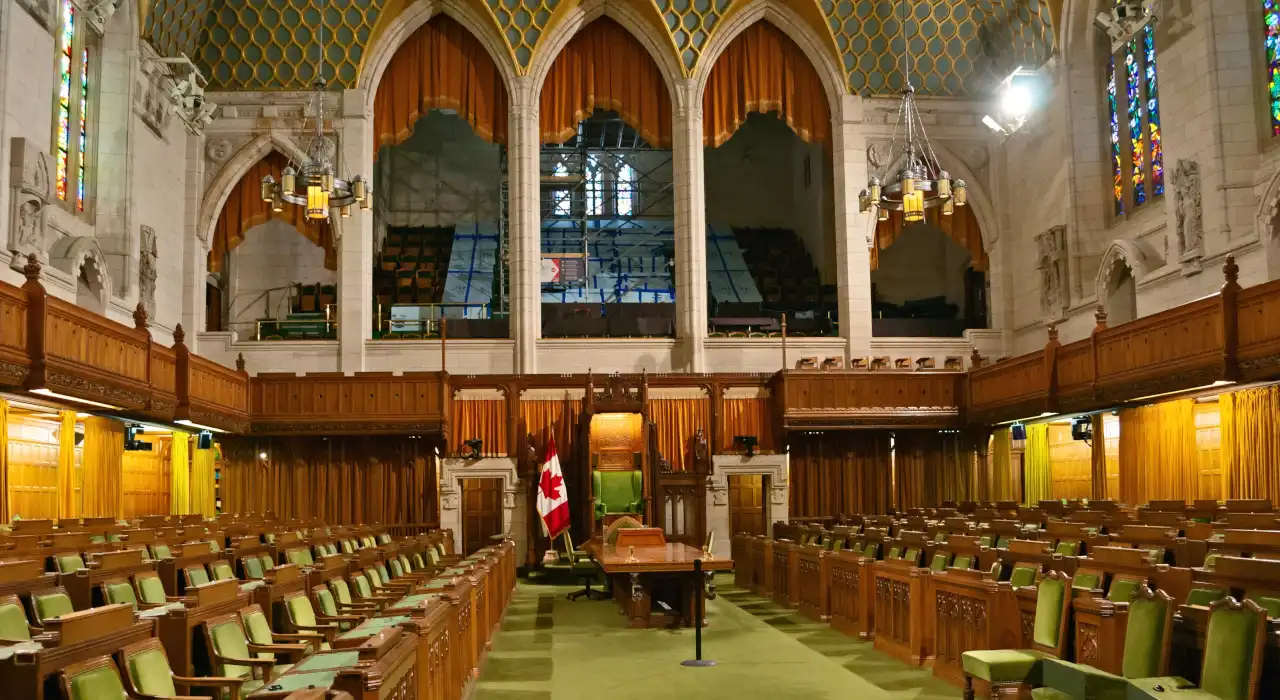In Canadian elections, your vote helps choose a local MP, not the Prime Minister. This guide breaks down how Parliament works, what ridings are, and how governments are formed. Understanding these basics is key to participating meaningfully in democracy, whether you’re voting or just getting involved.
Federal and Provincial Levels
In Canada, we have both a federal government and provincial or territorial governments1. Each has its own legislative assembly where laws are made, and we vote to choose representatives for these assemblies.
At the federal level, we elect Members of Parliament (MPs) to represent us in Parliament2. At the provincial or territorial level, we elect representatives to sit in the provincial or territorial legislature.
The federal and provincial governments handle different areas of responsibility3. Some areas fall strictly under federal jurisdiction, such as national defence and diplomacy. Others, like education, are managed by the provinces. Some areas, such as immigration, are shared between both levels of government.
Municipal governments4 are also important. In municipal elections, we vote for local representatives such as the mayor and city councillors.
This guide focuses on federal elections. Rules around voting, donations, and campaign activities may differ at the provincial and municipal levels.
The Senate and the House of Commons
Canada’s Parliament has two chambers5:
The Senate: Senators are appointed by the Governor General on the advice of the Prime Minister. There are no public elections for the Senate.
The House of Commons: Members of Parliament (MPs) are elected by Canadian citizens.
When we talk about federal elections in Canada, we are referring to the election of MPs to the House of Commons.
First-Past-the-Post System
Canada is divided into 343 electoral districts6, known as ridings. Each riding elects one MP. The country uses a first-past-the-post7 voting system, meaning the candidate with the most votes in a riding wins the seat.
Ridings are designed to have roughly equal populations, but exceptions exist. To reflect population changes, ridings are reviewed and adjusted every 10 years.
How the Prime Minister Is Chosen
In Canada, we do not directly vote for the Prime Minister8. Instead, we vote for MPs. The leader of the political party that wins the most seats in the House of Commons is invited to form the government and becomes the Prime Minister.
This system is different from countries where voters cast ballots specifically for the head of government.
Key Takeaways from This Topic
What are the levels of government in Canada?
Canada has federal, provincial or territorial, and municipal governments. Each level has its own responsibilities and elections to choose representatives.
Who do we vote for in federal elections?
We vote for Members of Parliament (MPs) who represent us in the House of Commons. Senators are not elected; they are appointed.
What is the first-past-the-post system?
In each of Canada’s 343 ridings, the candidate with the most votes wins. This is called the first-past-the-post system.
How is the Prime Minister chosen?
We don’t vote directly for the Prime Minister. The leader of the party that wins the most seats in the House of Commons becomes Prime Minister.
Do voting rules differ between federal and provincial elections?
Yes. This guide focuses on federal elections, but rules for voting, donations, and campaigning can differ at the provincial and municipal levels.
References
-
Government, The Canadian Encyclopedia ↩
-
Member of Parliament (MP), The Canadian Encyclopedia ↩
-
The constitutional distribution of legislative powers, Government of Canada ↩
-
Municipal Government in Canada, The Canadian Encyclopedia ↩
-
Parliament, The Canadian Encyclopedia ↩
-
Canada’s Federal Electoral Districts, Elections Canada ↩
-
Introduction – A History of the Vote in Canada, Elections Canada ↩
-
Minority Governments in Canada, The Canadian Encyclopedia ↩
